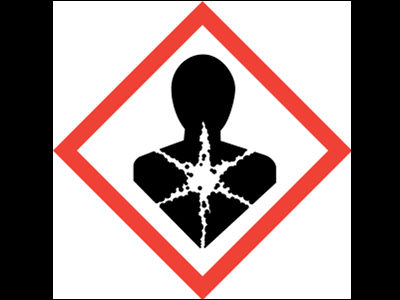Is cancer treatment really advanced? Possibility that increase in survival rate is not 'treatment' but 'early detection'

by Kendal James
It is said that the 5-year survival rate after cancer onset is rising, but this is the result of the development of early detection technology, it may be pointed out that the cancer treatment itself did not progress. So, a psychiatrist, Scott Alexander , has examined whether cancer therapy is progressing from research published so far.
Cancer Progress: Much More Than You Wanted To Know | Slate Star Codex
https://slatestarcodex.com/2018/08/01/cancer-progress-much-more-than-you-wanted-to-know/
First of all, when we look at the graph of cancer incidence in the United States, we can see that since the peak in the 1990s turned to a decreasing trend, overall it increased considerably from 1975. However, in the background of this graph there is an increase in life expectancy, and elderly people with high risk of cancer are receiving an increase.

Changing the graph to the age-adjusted mortality rate shows that the cancer mortality has increased to the 1990s and then decreased thereafter.

There seems to be smoking as one of the major reasons why cancer incidence and death rate continued to rise until the 1990s. Below is a graph showing the mortality rate by type of cancer. The red graph shown as "Lung & bronchus" has progressed up to the 1990s, indicating that it is on an upward trend.

The technology of cigarette making improved in the 20th century, people became wealthy, advertising developed, and the number of smokers rose dramatically. Peak shifts in graphs of lung & bronchial carcinoma are the time taken for cigarettes to cause cancer, although the following graph showing smoking rate peaks in the 1960s and 70s. Afterwards, as the smoking rate declined, the death rate due to lung & bronchial cancer also decreased.

Another factor that has increased cancer incidence is prostate cancer. In the late 1980s, doctors were advised to examine prostate cancer from the authorities. As a result of doctors examining and treating without missing signs of small cancers, cancer incidence as numbers increased. However, because the prostate cancer itself is rarely died, the authorities changed the policy in the 1990s, and it is said that the examination has not gone eagerly.
On the other hand, gastric cancer has dramatically decreased in the past few decades. This has been shown by multiple studies, due to improved food processing technology, improved treatment for Helicobacter pylori , and increased vitamin C intake. In addition, it is known that the reduction of colorectal cancer was able to remove polyps that are front cancer symptoms by colonoscopy, and it is known that the increase in liver cancer was caused by the epidemic of hepatitis C virus I will. As mentioned above, there are various reasons to increase or decrease the incidence and death rate of various cancers for each reason, but as a whole there is a trend of declining at the peak of 1990's.
However, many of the reasons for this decrease are not due to advancement of cancer treatment, there is a possibility that it is due to early detection. So Alexander says that it is common to use a 5-year survival rate that shows how much cancer can be lived after the diagnosis of cancer, in order to see the degree of influence of cancer development development, the following graph We are citing.
From the left, the graph is divided into parts of all cancers, pancreas, liver, esophagus, lung & bronchus, brain & other nervous system, ovary, skin melanoma and prostate, the blue graph is from 1975 to 1977, the red graph is from 1987 ~ 1989, the green graph is the 5 year survival rate between 2002 and 2008. In both cases, you can see that the survival rate is growing as time progresses. Alexander says "It does not contain cancer that has advanced greatly in treatment such as breast cancer and colorectal cancer, but this is the best graph I have found".

However, the graph above may also be affected by not only advances in treatment but also the development of early detection techniques. In 2000 research results , "There was little relationship between the change in the 5-year survival rate of a specific tumor and the change in the mortality rate associated with the tumor, while on the other hand the change in the 5-year survival rate and the tumor A positive relationship was recognized between changes in discovery rate. " Of course, this research does not indicate that "treatment of cancer is not progressing". There is also the possibility that the influence of progress of treatment may be hidden behind the influence of advancement of early detection technology.
As doctors classify cancer by degree of progress , Alexander examined the 5-year survival rate of each degree of progress. Because lead time bias and length bias may be occurring, using the data published by Ahmedin Jemal , researcher of American Society of Cancer Association, the change in 5-year survival rate of patients with each degree of progress By looking at, Alexander decides to see if cancer therapy is really progressing.
As a result, the 5-year survival rate had increased between 1975 and 2012 in any degree of progress. However, this research classifies it with only three degrees of progress, "local cancer", "region invasive cancer" and "distant metastatic cancer", and it can not be said that unless it is a more detailed survey, it proves the progress of cancer treatment Alexander says. "This survey seems to indicate that people who have a lot of cars are happier, but here are criticisms that" people who have many cars are happy because they are rich " "Alexander says.
More detailed data analysis (PDF file) research indicates that the tumors found in each degree of development are smaller after 1975. In this regard, 61% of the increase in breast cancer survival rate in the degree of progress of limited cancer and 28% of the increase in breast cancer survival rate in the degree of progress of region invasive cancer can be explained by the fact that the tumor size is small Thing. However, some studies have found that the increase in survival rate is not related to tumor size.
Thus, the results of the previous studies are varied and it seems that it has not been concluded that "cancer treatment is progressing / not doing". Alexander says that the survival rate of cancer seems to be rising from the current data, while suggesting that there may be confounding that has not been observed yet. Since 1970, the 5-year survival rate has gradually increased, and progress was indicated as "not 0".
Related Posts:
in Science, Posted by darkhorse_log







